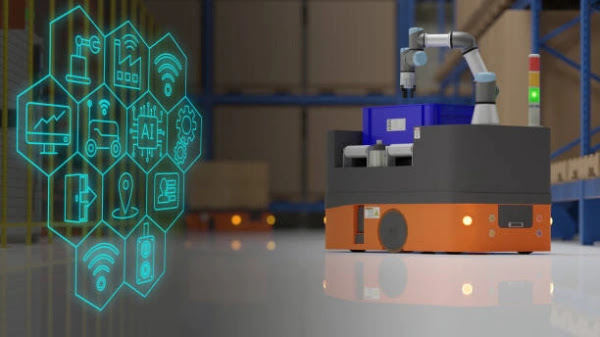Featured
- Get link
- X
- Other Apps
Microservices Architecture and DevOps: A Symbiotic Evolution

Introduction
In the ever-evolving landscape of software development, two
prominent methodologies have emerged as game-changers: Microservices
Architecture and DevOps. This thing explores the intersection of these two
paradigms, delving into their individual characteristics, the symbiotic
relationship they share, and the transformative impact they've had on modern
software development.
Microservices Architecture: Unleashing Scalability and Flexibility
Foundations of Microservices
Microservices Architecture (MSA) is a design approach where
an application is broken down into a collection of loosely coupled,
independently deployable services. Unlike monolithic architectures, which
consist of a single, tightly integrated codebase, microservices promote
modularity and autonomy.
Key Characteristics of Microservices:
Independence: Microservices operate independently, allowing
for separate development, deployment, and scaling of each service.
Resilience: Failures in one microservice do not necessarily
impact the entire system, enhancing overall system resilience.
Scalability: Individual microservices can be scaled
independently based on specific demands, optimizing resource utilization.
Technological Diversity: Each microservice can be developed
using different technologies, enabling teams to choose the most suitable tools
for their specific requirements.
Benefits of Microservices Architecture
Agility: Microservices facilitate faster development cycles,
enabling agile practices like continuous integration and continuous deployment
(CI/CD).
Scalability: The modular nature of microservices allows for
efficient horizontal scaling to meet varying levels of demand.
Fault Isolation: Isolating services minimizes the impact of
failures, improving overall system robustness.
Technology Flexibility: Teams can choose the most
appropriate technology stack for each microservice, fostering innovation and
adaptability.
DevOps: Bridging Development and Operations
Understanding DevOps
DevOps is a cultural and organizational movement that aims
to bridge the gap between software development and IT operations. It emphasizes
collaboration, automation, and continuous improvement throughout the software
development lifecycle.
Key Tenets of DevOps:
Collaboration: DevOps promotes a culture of collaboration
between development and operations teams, breaking down silos and fostering
shared responsibility.
Automation: The automation of repetitive tasks streamlines
processes, reducing manual errors and accelerating delivery pipelines.
Continuous Integration/Continuous Deployment (CI/CD): DevOps
practices encourage the integration of code changes into a shared repository
and automate the deployment pipeline, ensuring rapid and reliable software releases.
Monitoring and Feedback: Continuous monitoring provides
real-time insights into application performance, enabling proactive issue
resolution.
DevOps Benefits
Accelerated Time-to-Market: The integration of development
and operations accelerates the software development lifecycle, enabling faster
and more frequent releases.
Increased Collaboration: Breaking down silos fosters better
communication and collaboration, leading to more efficient and effective teams.
Reduced Failure Rates: Automated testing and deployment
processes, coupled with continuous monitoring, reduce the likelihood of errors
in production.
Improved Scalability: DevOps practices support the
scalability of infrastructure and applications to meet growing demands.
The Symbiosis: Microservices and DevOps
Aligning Principles
Microservices and DevOps share common principles, making
them natural allies in the quest for agile and efficient software development.
Modularity: Both microservices and DevOps emphasize breaking
down complex systems into manageable, modular components.
Autonomy: Microservices operate independently, aligning with
the collaborative and autonomous nature of DevOps teams.
Automation: DevOps relies on automation to streamline
processes, a principle that resonates with the individual deployment and
scaling of microservices.
Challenges and Solutions
While the synergy between Microservices and DevOps is powerful, challenges exist in implementing both paradigms simultaneously.
Service Dependency Management: Microservices may have
interdependencies, requiring careful orchestration. DevOps practices help
automate and manage these dependencies effectively.
Testing Complexity: With numerous independent services,
testing can become complex. DevOps practices, especially automated testing,
address this challenge by ensuring comprehensive test coverage.
Monitoring and Observability: The decentralized nature of
microservices demands robust monitoring. DevOps complements this with
continuous monitoring and feedback loops, enabling teams to identify and
resolve issues promptly.
Case Studies: Success Stories
Several industry giants have successfully adopted
Microservices Architecture and DevOps, realizing substantial benefits.
Netflix: A Pioneer in Microservices and DevOps
Netflix, a streaming giant, embraced microservices to
enhance scalability and flexibility. Combined with a DevOps culture, they
achieved rapid feature releases and high system availability, revolutionizing
the media streaming industry.
Amazon: Seamless Shopping Experience
Amazon's transition to microservices, coupled with DevOps
practices, has enabled the company to scale its e-commerce platform seamlessly.
The result is a highly available, resilient, and continuously evolving shopping
experience for millions of users.
Future Trends: Beyond the Horizon
The evolution of Microservices Architecture and DevOps is
far from over. Future trends include:
Serverless Computing: The rise of serverless architectures
complements microservices, offering even more granular scalability and reducing
operational overhead.
AI and Automation: Incorporating artificial intelligence
into DevOps processes can further enhance automation, predictive analysis, and
proactive issue resolution.
Edge Computing: As applications extend to edge devices,
microservices and DevOps will play a crucial role in managing distributed
systems efficiently.
Conclusion: A Transformative Duo
Microservices Architecture and DevOps represent a
transformative duo reshaping the software development landscape. Their combined
power lies in agility, scalability, and continuous improvement. As technology
continues to advance, embracing these paradigms becomes not just a choice but a
necessity for organizations aspiring to thrive in the digital era. The symbiotic
relationship between Microservices and DevOps is not just a trend but a
fundamental shift that promises to redefine how software is developed,
deployed, and maintained in the years to come.
- Get link
- X
- Other Apps

